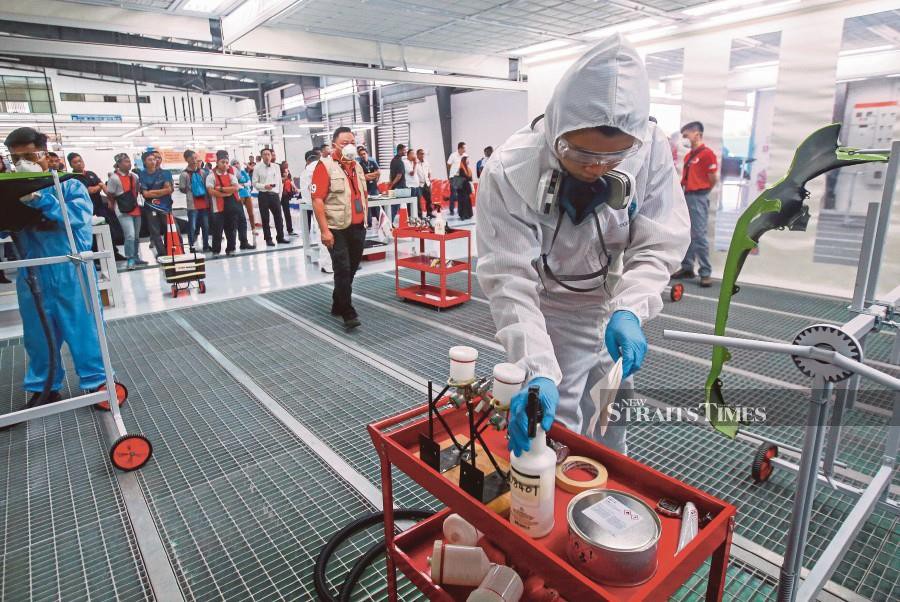Event News
Four Strategies to Improve the Country’s Technical and Vocational Education and Training (TVET)

Professor Datuk Dr. John Antony Xavier, the Vice-Chancellor & Chief Executive of AIMST University, has proposed four strategies to improve the country’s Technical and Vocational Education and Training (TVET).
Through TVET, youths have the educational advantages to contribute to Malaysia’s industrial success, especially in Industry 4.0.
The enlightening article, ‘Attitudes to TVET die hard in Malaysia’, got featured in the columnist section of NST on 5 October 2021:
Attitudes to TVET Die Hard in Malaysia
Many developed countries owe their industrial triumph to their outstanding system of technical and vocational education and training, or TVET.
In Germany and Switzerland, for example, TVET is considered equivalent, or even superior, to academic education.
The Organisation for Economic Cooperation and Development (OECD), a group of mostly rich countries, reported in 2017 that 59 per cent of 16 to 18 year olds did apprenticeships in Switzerland and 41 per cent in Germany.
It is, therefore, timely, more so in the era of Industry 4.0, that we entice our youth to TVET. That way, we can give our youth the educational advantages to contribute to Malaysia’s industrial success.
For its part, the government has provided generous allocations for technical education under its five-year development plans. It established early this year the National TVET Council to coordinate the country’s 1,300 public and private TVET institutions.
While the institutional platform is massive, and opportunities enormous, attitudes die hard in Malaysia. The public still reveres universities as a route to gain societal esteem, employability and prosperity.
TVET has long suffered from the misplaced disdain that it is more appropriate for those who are not good enough for university education.
Nothing could be further from the truth. TVET is indispensable for reskilling and upskilling.
It is a place for one to gain skills in entrepreneurship and Industry 4.0 technologies, such as AI (artificial intelligence) and automation, Internet-of-things, cloud-computing and analytics. And it will surely alleviate the state of digital readiness of our youth (aged 15 to 24) and reduce the 12 per cent unemployment among them.
Only 22 per cent of our workforce has tertiary education. The rest has, at best, a secondary-school education. TVET offers the latter a chance to increase their salaries through enhancing their skills in construction, engineering, mechanics, and technology. In Germany, for example, technical and skilled workers earn as much as professionals.
That should move society towards a “parity of esteem” between academic and vocational education. And it will further the government’s agenda to raise the nation’s competitiveness and wages while reducing the country’s reliance on foreign labour.
With more than 200,000 unemployed graduates, the wage premium for university education has dampened. This augurs well for TVET even as the demand for skills grows stronger.
How can technical education be improved? Here are four strategies.
FIRST, to equip students with marketable skills, TVET curriculums would require a vigorous shake-up to cover technical knowledge and behavioural skills. The skills taught should suit the requirements of the industry. Such an exercise should be developed with the industry.
The Future of Jobs Report 2020 of the World Economic Forum highlights that workers would also need to be equipped with the soft skills of entrepreneurship, critical thinking, problem-solving and interpersonal skills.
Even as the curriculums are revised, the qualifications of instructors should correspondingly be upgraded.
SECOND, to cast off the ingrained bias against it, TVET should be better promoted to parents and students in schools. I remember, at school, I had had to do woodwork and other industrial-oriented work. A clear policy on employment would go a long way to reorient young minds, as well as those of parents, of the value of vocational education.
THIRD, universities too should develop more competency-based courses where the curriculums integrate academic work with skills training for industries.
They could also offer credit exemptions for their degree programmes to those with technical diplomas. That way, students will be assured that technical training can still help earn a university education.
FOURTH, students of TVET should aim to become T-shaped workers. They should be specialised in one technical discipline while having a broader understanding of, and even better, being adept at other related skills.
We must recognise that not every youth will be inclined to pursue a purely academic education. And if Malaysia wants to go long on skills as other advanced countries, then there should be no let-up on TVET whatever the mores of society.

